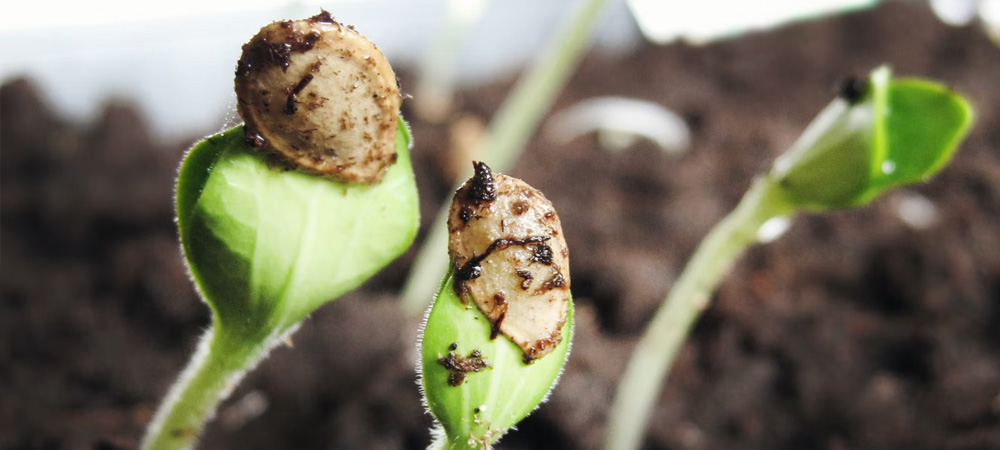How to Grow Seeds in a Greenhouse

Seeds are fragile, so you need to grow them with care.
In this guide, we'll outline how best to grow seeds in a greenhouse.
When should I plant greenhouse seeds?
You can sow some seeds in your garden during the autumn and winter months, with natural fluctuations in weather helping them grow. However, some seeds can’t be managed as effectively this way and need the steady temperatures and controlled environment of a greenhouse to flourish. If you start your seeds in a greenhouse environment, you can provide the stability that certain seeds need.
One of the key purposes of a greenhouse is to control the temperature and humidity your seeds and seedlings need to grow. As greenhouses are controlled environments, seeds can be started inside them at any time of year.
If you are planning on starting plants which can aim to move to your garden in the spring, start the seeds in your greenhouse around six to eight weeks before the final expected frost date for your area. Try to ensure most seeds are germinating in a temperature around 70-80 F. (21-27 C.). Make sure temperatures aren’t dipping beneath 50-55 F. (10-13 C.) overnight, and continue to monitor the temperature of your greenhouse very closely.
Although greenhouses tend to stay warm during the daytime when the sun is out, temperatures can fall considerably at night. Using a seedling heat mat helps you to give seeds consistently warm soil temperatures. If your greenhouse does get very hot, you can open windows or install fans inside them to maintain suitable temperatures.

How to start seeds in a greenhouse
It’s common for people to start seeds in greenhouses inside individual plug trays and open flat seed trays. Some seeds have different requirements than others. Some need to be scarified, stratified or soaked overnight before they are planted in trays. If you’re using an open flat tray, consider p[langig your seeds in carefully spaced rows to make the thinning, fertilizing and watering processes easier. This may also make it easier for you to treat seedling diseases.
Once your seedlings have started producing leaves for the first tie, you can transfer them to individual pots. If you’re using a single cell tray, only plant one or two seeds for each cell. Some gardeners prefer to plant in plug trays, saying the plug cells are able to both hold and maintain extra warmth and moisture for the seed.
Seedlings can also remain in plug trays for longer without the risk of their roots becoming attached to others. If your seedlings are in plugs, you can pop them out and transfer them directly to your garden. Many people start seeds in greenhouses to avoid the cost of special seed starting mixes.
If you want to create your own general-purpose potting mix, add 1 equal part peat moss, 1 part perlite and 1 part organic material (compost is a popular option). Just make sure you sterilize any pots that you’re using between using. This will kill off pathogens linked to diseases like damping off. If the seedlings don’t receive a sufficiently intense amount of light, or the temperature is too cool, you may have issues with weak stems. This may also be a problem if you over-water your seedlings.
Conclusion and Related Reading
We hope you enjoyed our guide on how to grow seeds in a greenhouse. If you have questions, you can contact us at support@swgreenhouses.co.uk.
If you want to keep reading, consider our related articles below:
- What to Grow in a Greenhouse for Beginners
- What to Grow in a Small Greenhouse
- What to Grow in a Greenhouse in Summer
- What to Grow in a Greenhouse in Winter
- What Vegetables to Grow in a Greenhouse
- Propagators
- Beginners Guide to Allotments
- Grow Bags vs Pots
- Tomato Grow Bags or Pots
- What is a Greenhouse?
- How Does a Greenhouse Work?
- Why Do Plants Grow Faster in a Greenhouse?
 Author:
Author: